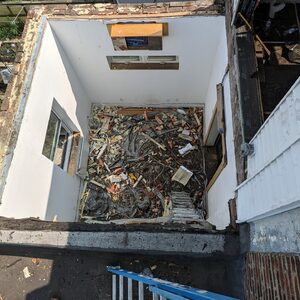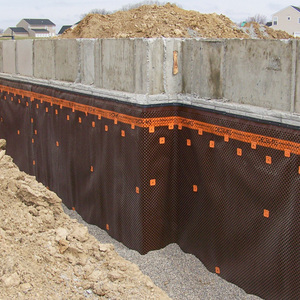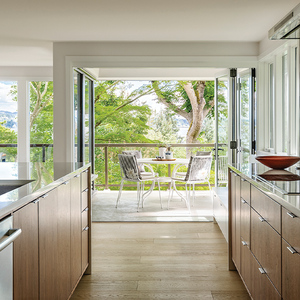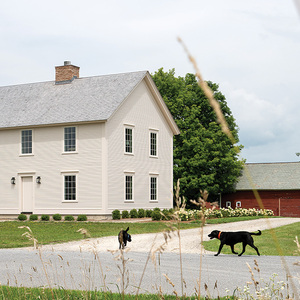Hi Folks!
DH and I have been busy trying to get our pool up and operational and we have run into an electrical problem that seems to be getting more and more complicated. Any advice and suggestions would be most appreciated.
The set up is this: last fall the pump and filter finally gave up the ghost, so we are replacing the equipment. Note the pool equipment area is ~10′ from the pool, and 70′ from the house. The plumbing is no issue, but the electrical is becoming another matter.
When we inspected the old breaker box, we found signs of potential load issues (burnt wires), shorts (burn marks in panel), and some rust. The box has both a 220 circuit and a 110 circuit directly running to it from main panel in the house. However, there are 3 conduit pipes running into the box, and it appears that several additional circuits may have been branched off other locations and run into the box…. fubar…
So, we first replaced the old breaker box, and utilized the same 220 & 110 circuits from the house. We also connected wire sets that we knew went to specific lights. Unfortunately, when we energized the 220 circuit, this generated an arc on one of the conduit pipes where it was screwed into the new panel… (not the conduit pipe containing either of these circuits)
So, we said hmmm, open neutral ?, short ? screwed up wiring ? all of the above ? End result, we looked at running new wires from the main house panel, but distance and pipe paths were an issue. So, we said screw it, dug a new trench from the house, and ran a complete new 50 AMP circuit from our garage panel(12/3 exterior romex through a buried 3/4″ NM exterior flex pipe) Great fun in Missouri clay…
We also added a breakout box off the new panel that contains a 220 AMP GFIC breaker and in turn powers the pump and a new automatic chlorinator (salt system)control box.
We have two main questions for the above.
1. The pump and chlorinator control box both contain exterior lugs for bonding them to ground. We have a 10′ copper grounding bar that we are going to position near the pool equipment and attach to these. Both are grounded via green grounding wires, and conduit connections are made via same NM pipes. So, we think this is correct and shouldn’t lead to any ground loops.
2. As stated, the pool breakout box is connected to the house via NM pipe. And, we have not removed the 3 old galvanized pipes attached to the box yet (just the old wiring). This breakout box has an option to insert a screw threw the neutral bar that bonds the box exterior to the neutral bar. So, our question is do we need to bond the box via this screw ?, or do the old galvanized pipes take care of this ?
Thanks for your feedback,
Lisa



















Replies
12/3 for 50 amp?
UHHHHHHHHHHHH.........
First some questions:
Just exactly what is a "breakout box"? What feeds it? How is it protected from overcurrent?
What is "12/3 exterior romex"? Is that UF? A flat, generally gray cable containing 3 conductors.
Where on earth did you get a 220 AMP GFIC breaker? Do you mean a 2 pole, 20 amp GFCI breaker?
Are the "galvanized pipes" plumbing pipes or rigid metallic conduit? Why did you choose to not reuse them and instead trench and bury "3/4" NM exterior flex pipe". I'm not really sure that flex is legal to bury in the first place - rigid NM (PVC) conduit is legal and the most commonly used around here.
A 50 amp load at 70' run will require #6 copper conductors. #12 will not ever function properly, or for long.
In your case, photos would help immensely - especially the boxes, inside and out and all terminations within those boxes.
Jim
Thanks for your interest in our little problem.First a little backstory - this house is a poster child for homeowner neglect and botched diyisms. The bones are great, it was originally well built, but the previous owners.... This is NOT the first time we have had the "why in world did they..."Sorry, meant to say 220 volt circuit, not 220 amp breaker. My typing doesn't always keep up with my thoughts. The "breakout" box would be a sub-panel that is dedicated to just the 220 volt circuit. It is designed for spas and is GFIC. There were multiple circuits in the old box, only some of which did we think we knew what they were for (a defunct automatic pool cover, lights around to pool area, exterior outlets ditto). We are not reconnecting any of these. The only light circuit we have kept at this point is a light on the shed over the equipment (we could visually trace that entire circuit). Therefor the 50 amps is dedicated to the pump and controller (which has a negligible draw)The reason we didn't reuse the original conduit is that we have NO idea of where exactly it ran, or it's condition. What we had unburied was severely rusted. This is at least thirty or forty year old work... It has probably broken and leaked in multiple places. We really did not think we could pull new wire. As to using the old wiring, there was an obvious short somewhere IN THE CONDUIT, not usable! The old galvanized pipe is rigid metallic conduit.Our main questions remain: Will using the copper grounding rod cause a ground loop situation? Do we need to bond the neutral bar to the box exterior with the optional grounding screw? Sorry for the confusion.Lisa
Your pool panel is not 'service equipment,' or, in common speech, a 'main' panel. You do NOT bond the neutral to the case. You must keep the neutral and the ground wire separate ... and run four wires from the panel in the house. The ground rod is installed for an entirely different reason than the ground wire. Even though they are electrically bonded together, they serve different purposes. All metal in OR near a pool has to be directly connected ("bonded" to a copper ground wire. Even "the water" needs to be bonded, as does the rebar, and the very earth under the deck. These steps are especially important if the pool shell is of fiberglass or plastic. Essentially everything also needs to be GFI protected.
The short version is .... hire a real electrician.
Grounding / bonding are critical issues with any pool, and this is one area where the codes have changed considerably. That's the first reason you need a pro.
Secondly, that stuff needs to be at least ten feet from the pool.
Finally, you describe other. separate problems that need to be fixed.
Pool contractors are NOT electricians. Get a real electrical contractor out there.
The short answer is I don't know but I'd like to mention that the IRC (building code) has a whole chapter that deals with swimming pool installations. It's chapter 41. I don't know if this code wold be enforced in your area but it would seem like a worth while read. It has about a page on grounding and another page worth of text on bonding. Maybe this would be available at a library, etc.
BTW - I am a building professional , but personally I'd hire a licensed electrician - at least to check my work.
Edited 6/23/2008 7:45 am ET by Matt